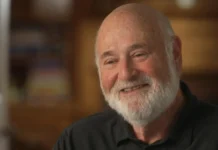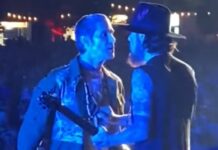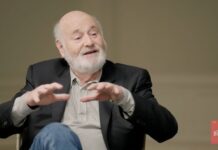It’s no secret that when something new and exciting becomes popular,some people want to inspect it closely and possibly copy it. Such was the case shortly after the release of Van Halen’s classic 1978 self-titled debut. In particular, Eddie Van Halen’s shred-heavy, two-handed tapping guitar solos, which by the ’80s, every rock and metal guitarist was approximating in some way, shape, or form.
During an interview with Get on the Bus, former Van Halen bassist Michael Anthony recalled the early days of Eddie Van Halen refining and perfecting his soon-to-be trademark two-hand tapping technique. And how guitarists even back then took notice of what he was doing on the six-string.
“We used to rehearse in this little garage when I first joined the band, and we used to rehearse there every day for a while,” Anthony said. “That’s when Eddie was also developing his ‘hammers,’ his tapping style.”
“And it’s funny, because there were like two or three guitar players in the area that Ed was friends with, and they knew that we rehearsed there. And I remember one time we went to take a break, and we walk outside, and there were a couple of guys there like this, listening at the door, and they wanted to hear what Ed played.”
Anthony served as Van Halen’s bassist from 1974 to 2006. He recalled advice that singer David Lee Roth once gave to the guitarist to further prevent others from stealing parts of this particular part of his playing style prior to the band issuing any recordings.
“There were gigs that we would play. We played a place called the Golden West Ballroom in Norwalk, California. And that was one place where we could play original stuff. And we opened up for UFO there. I think that was one of the biggest shows we ever did. It held about 1,500 to 2,000 people.”
“But when Ed would play a solo, Dave would tell him, ‘Turn your back to the audience, dude, because you got this thing, and you don’t want everybody to see it.’ So Eddie would, literally, play solos, and he would turn his back to the audience when he would be tapping. Which was really, really interesting. And it wasn’t so much the tapping, but the way he did it was different than what anybody else was trying to do.”













